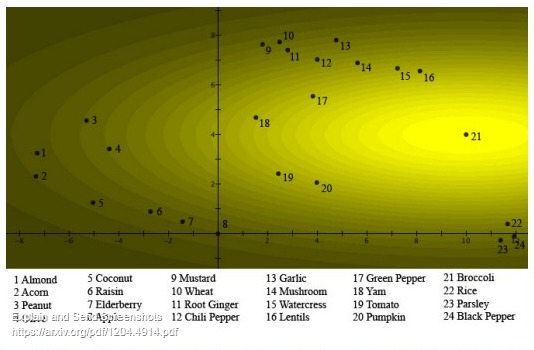

|
"L'acte de penser et l'objet de la pensée se confondent" Parménide Full Screen | Play Le contenu de ce wiki est Copyleft
|
About ArtScience
OlivierAuber, 09/01/2017  * *ArtScience has become a buzzword and a battlefield for institutions which seek for some audience and legitimacy. One of the main fields of exploration of art and science is the infinite facets of the relations between humans and the livings in general. In this respect, there is a certain danger that ArtScience appears as a elephant in a porcelain shop, i.e. that ArtScience turns into an institutional motto at the expense of practitioners of art or science who work deeply and diligently without using such a big word. ArtScience may be seen as something similar to the “Fruit or Vegetable double-slit experiment” [Hampton, 1988; Aerst & Sozzo, 2012] that unfolded the quantum nature of language. As the best example of a fruit is, let say an apple, the best example of art would be, let say Picasso. The best example of a vegetable is, let say broccoli, and the best example of science is, let say Einstein. Then, if we unite Fruit and/or Vegetable and we try to find the best example of this semantic mixture, we don’t get apple nor broccoli but a set of fruits and vegetables, each one affected by a certain probability. The output is something like fringes of interference [Young, 1801]. The same will probably happen with ArtScience. The output won’t be Picasso nor Einstein, but at first a galaxy of concepts and people. Indeed, tomato, olive, garlic and mushroom fit well in Fruits or Vegetables, but it seems that there are some socio-political phenomena that sort all of them after a certain time. Think that this experiment had a precedent during the Renaissance. The output was Leonardo da Vinci. He overwhelmed Filippo Brunelleschi (my favorite), Giovanni Pico della Mirandola, Piero della Francesca and so many others. That is how this first historical ArtScience experiment converged toward a peculiar figure. Hence we could try to climb on a meta level by considering that art and science are at first concerned by the dynamics of language that frames the relationships between humans ; among them there are some political aspects [Dessalles, 2017]. By considering this, ArtScience could become another language experiment of the Human Symbolic Evolution. The theoretical points evoked in this short text are developed in my book ANOPTIKON (FYP Ed. 2019) - - - Notes J. A. Hampton (1988): “Disjunction of natural concepts,” Memory & Cognition, vol. 16, pp. 579–591, 1988. D. Aerst, S. Sozzo (2012): "Quantum Interference in Cognition: Structural Aspects of the Brain" https://arxiv.org/pdf/1204.4914.pdf Dessalles J.-L. (2017): Language: The missing selection pressure. https://arxiv.org/ftp/arxiv/papers/1712/1712.05005.pdf Billets
Il n'y a pas de commentaire sur cette page.
[Afficher commentaires/formulaire]
|